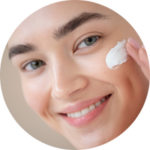How to Pamper Your Skin: A Step-by-Step Body Care Routine

Pampering your skin is one of the most rewarding acts of self-care. A thorough body care routine not only improves your skin’s health but also helps you feel rejuvenated, relaxed, and refreshed. Whether you’re looking to indulge in a luxurious treatment or simply enhance your skin’s radiance and softness, creating a consistent body care routine is key. In this article, we’ll walk you through a step-by-step guide on how to pamper your skin, from cleansing to moisturizing, with the best tips for achieving soft, glowing skin.
Why is a Body Care Routine Important?
A proper body care routine is essential because your skin is the body’s largest organ, and taking care of it affects not only its appearance but also its function. Regular skincare practices help to:
-
Maintain hydration: Skin can easily become dry due to environmental factors, aging, and lifestyle habits. A consistent body care routine ensures that your skin stays moisturized and soft.
-
Improve circulation: Gentle massages, exfoliation, and other pampering steps stimulate blood flow, promoting healthier skin.
-
Prevent skin issues: Regular care can help prevent common issues such as dry patches, irritation, and ingrown hairs.
-
Promote relaxation: Pampering your skin with a luxurious routine offers moments of relaxation that benefit your overall well-being.
Let’s break down the best steps to follow for an effective and indulgent body care routine that leaves your skin feeling pampered and nourished.
Step 1: Start with a Cleanse
The first and most essential step in any skincare routine is cleansing. Cleansing your skin removes dirt, oils, sweat, and impurities that can clog pores and prevent your skin from absorbing the benefits of subsequent treatments.
Choose the Right Cleanser for Your Skin Type
There are various cleansers available for different skin types. For your body, opt for a body wash or shower gel that suits your skin’s needs:
-
For dry skin: Choose a hydrating, creamy body wash containing ingredients like shea butter, glycerin, or hyaluronic acid.
-
For oily skin: If your skin is prone to body acne or oiliness, select a gel-based or foaming body wash that contains salicylic acid or tea tree oil.
-
For sensitive skin: If you have sensitive skin, look for fragrance-free, gentle cleansers with calming ingredients like aloe vera or chamomile.
To cleanse effectively, use lukewarm water, as hot water can strip your skin of essential oils. Gently massage the cleanser into your skin in circular motions, focusing on areas that tend to be more prone to sweat or dirt build-up, such as underarms, feet, and back.
Step 2: Exfoliate Your Skin
Exfoliation is a key step in pampering your skin. By sloughing off dead skin cells, you reveal smoother, softer skin while also allowing your skincare products to penetrate deeper and work more effectively. Exfoliating also helps to promote healthy circulation.
Choose an Exfoliant That Suits Your Skin
-
For dry skin: Opt for a gentle, chemical exfoliant that contains ingredients like lactic acid or glycolic acid to remove dead skin without causing irritation.
-
For normal to oily skin: Consider a physical exfoliant with small, smooth particles, or a scrub with salt or sugar to buff away rough patches.
-
For sensitive skin: Use a gentle exfoliant with fine grains or a scrub that has added soothing ingredients like lavender or green tea extract.
To exfoliate, gently massage the exfoliant onto damp skin in circular motions, paying extra attention to rough areas like elbows, knees, and feet. Be careful not to over-exfoliate, as this can lead to irritation and dryness. Aim to exfoliate 1-2 times per week.
Step 3: Pamper Your Skin with a Nourishing Body Mask
While body masks are not as commonly used as facial masks, they can provide an additional layer of care for your skin. Body masks are especially beneficial for dry or rough skin, as they deliver a high dose of hydration and nutrients.
How to Use a Body Mask
-
Clay masks: If your skin is oily or prone to body acne, a clay mask (containing ingredients like kaolin or bentonite) can help absorb excess oils and impurities.
-
Hydrating masks: For dry skin, a moisturizing body mask with avocado oil, coconut oil, or honey can deeply hydrate and nourish your skin.
-
Exfoliating masks: These masks often contain fruit enzymes like papaya or pineapple to gently exfoliate and brighten the skin.
Apply your chosen mask evenly over your body, focusing on dry areas. Leave it on for about 10-15 minutes, and then rinse it off with warm water.
Step 4: Apply a Body Oil or Lotion
Moisturizing your skin after cleansing, exfoliating, or using a mask is a must. A good moisturizer helps lock in hydration and keeps your skin soft, smooth, and glowing. Your skin will be most receptive to moisturizing products when it’s still damp, so apply your moisturizer right after you step out of the shower or bath.
Choose a Moisturizer Suitable for Your Skin
-
For dry skin: Opt for a rich, thick body butter or oil with nourishing ingredients like shea butter, coconut oil, or jojoba oil.
-
For normal skin: A lightweight body lotion or gel with aloe vera, vitamin E, or hyaluronic acid will keep your skin hydrated without feeling greasy.
-
For sensitive skin: Go for fragrance-free, gentle moisturizers with calendula, chamomile, or oatmeal to soothe and hydrate.
Massage the moisturizer into your skin using upward strokes to promote circulation and help the product absorb more effectively.
Step 5: Treat Specific Skin Concerns
If you have specific skin concerns such as stretch marks, uneven skin tone, or cellulite, now is the time to address them with targeted treatments.
-
Stretch marks: Use products containing retinoids, hyaluronic acid, or vitamin E to promote skin regeneration and improve the appearance of stretch marks.
-
Cellulite: Consider massaging in creams or oils containing caffeine, which can help tighten the skin and reduce the appearance of cellulite.
-
Dark spots or pigmentation: Look for creams containing vitamin C, niacinamide, or licorice extract to help brighten and even out your skin tone.
Gently massage these treatments into the affected areas and allow them to absorb before applying your regular moisturizer.
Step 6: Relax with a Warm Bath or Foot Soak
A warm bath is an excellent way to relax your mind and body while also pampering your skin. Add a few drops of your favorite essential oils (lavender, eucalyptus, or chamomile are great options for relaxation), or use a bath salt or bubble bath to soothe tired muscles and soften your skin.
If you’re focusing on your feet, a foot soak is a wonderful way to give them some extra TLC. Soak your feet in warm water with Epsom salts for 15-20 minutes to relieve tension and soften rough areas. Follow up with a rich foot cream and massage to keep your feet soft and nourished.
Step 7: Don’t Forget Sun Protection
The final step in your body care routine is sun protection. Even if you’re pampering your skin indoors, it’s essential to apply sunscreen every day to prevent premature aging and protect your skin from harmful UV rays. Choose a broad-spectrum sunscreen with an SPF of 30 or higher, and reapply every two hours if you’re spending extended time outdoors.
Step 8: Treat Your Hands and Cuticles
Your hands and cuticles are often neglected, but they deserve pampering just like the rest of your body. The skin on your hands is thinner and more prone to dryness, so it’s important to give them extra attention.
Nourish Your Hands and Cuticles
-
Hand creams: Apply a rich hand cream containing sheer butter, coconut oil, or glycerin to keep your hands soft and smooth. Pay extra attention to the back of your hands, where skin tends to be thinner and more prone to dryness.
-
Cuticle oils: Use a nourishing cuticle oil made with vitamin E or argan oil to keep your cuticles moisturized and prevent dryness or hangnails.
Consider wearing cotton gloves after applying your hand cream at night to lock in moisture while you sleep.
Step 9: Give Yourself a Relaxing Massage
A massage is a perfect way to unwind and boost circulation. Regularly massaging your body can also help reduce muscle tension and improve the absorption of your skincare products.
How to Perform a Self-Massage
-
Use body oils: Apply a nourishing body oil, such as almond oil or grapeseed oil, to your skin and gently massage it into your body in circular motions. Focus on areas that may be prone to tension, such as your neck, shoulders, or lower back.
-
Add a body roller: Using a roller or massage tool can help increase circulation and target specific areas that may feel tight or stressed. Roll it gently across your body to promote relaxation and reduce muscle stiffness.
Not only does a body massage help your skin absorb oils and moisturizers better, but it also relieves stress and promotes a sense of calm.
Step 10: Practice Consistency for Long-Term Benefits
Pampering your skin isn’t just about occasional indulgence; it’s about consistency. To see lasting results, it’s important to make your body care routine a regular practice. Whether it’s exfoliating once or twice a week, applying moisturizer daily, or giving your feet some TLC, staying consistent with your skincare efforts will yield the best results.
Conclusion: The Power of Pampering
Creating a step-by-step body care routine doesn’t have to be complicated. By following these simple, effective steps, you can pamper your skin, boost your self-care, and enjoy smooth, glowing skin. Not only will this routine nourish and protect your skin, but it also provides a perfect opportunity to relax and recharge. The benefits of pampering yourself extend far beyond skin-deep; it’s an act of self-love that can help improve both your physical and mental well-being. Treat yourself with kindness, and your skin will thank you for it.








